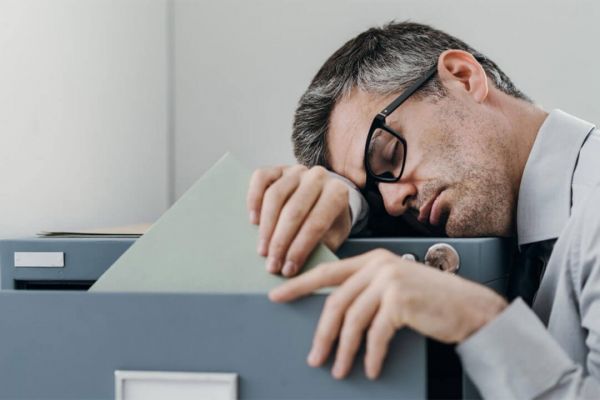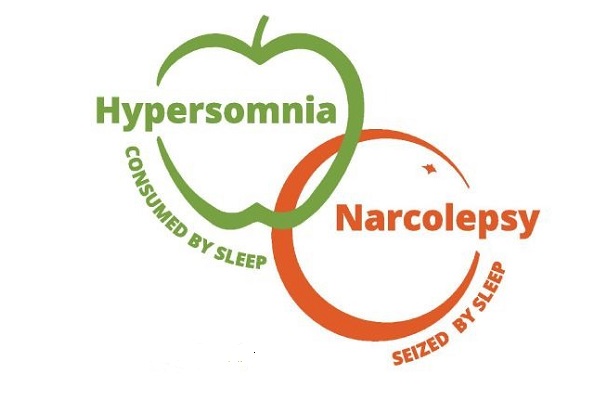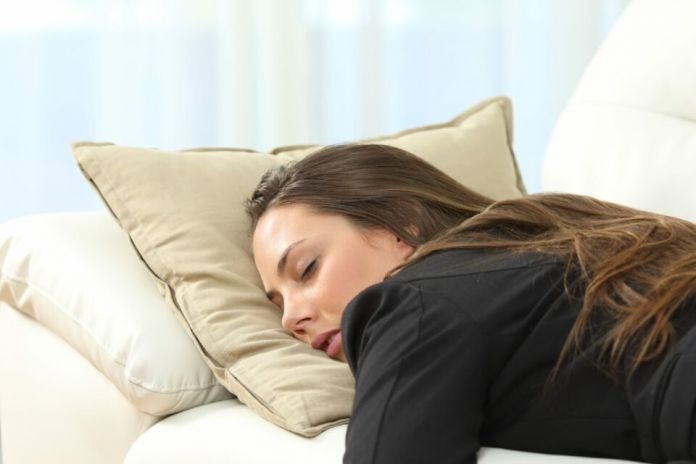Excessive daytime sleepiness (EDS) is a condition where a person experiences an overwhelming sense of drowsiness and an uncontrollable urge to sleep during the day. This symptom can significantly impact quality of life, work, social interactions, and overall well-being. Two primary disorders associated with EDS are narcolepsy and idiopathic hypersomnia. While both conditions have the common symptom of excessive daytime sleepiness, they have similar characteristics, causes, and treatment approaches.
Narcolepsy
Narcolepsy is a chronic neurological disorder that is characterized by excessive daytime sleepiness, as well as a range of other symptoms. It is caused by a dysfunction in the brain’s ability to regulate sleep-wake cycles. The disorder is often diagnosed in late adolescence or early adulthood but can occur at any age.

Sleep Centers of Middle Tennessee
Symptoms of Narcolepsy
- Excessive Daytime Sleepiness (EDS): Individuals with narcolepsy experience profound daytime sleepiness that is not alleviated by a full night of sleep. This can lead to frequent naps and unintended sleep episodes.
- Cataplexy: A hallmark symptom of narcolepsy, cataplexy involves sudden, brief episodes of muscle weakness triggered by strong emotions such as laughter, surprise, or anger. During a cataplectic attack, the person remains conscious but may experience loss of muscle control, resulting in slurred speech, drooping eyelids, or even collapse.
- Hypnagogic Hallucinations: These are vivid and often frightening hallucinations that occur while falling asleep. They are a result of the brain transitioning into sleep and can be distressing to those who experience them.
- Sleep Paralysis: This occurs when a person is temporarily unable to move or speak while falling asleep or waking up. It can be accompanied by feelings of pressure on the chest and intense fear.
- Disturbed Nighttime Sleep: Despite excessive daytime sleepiness, individuals with narcolepsy may experience fragmented nighttime sleep with frequent awakenings.
Causes and Pathophysiology
The primary cause of narcolepsy is a deficiency of hypocretin that is also known as orexin, a neurotransmitter that regulates wakefulness and sleep. This deficiency is often due to the destruction of hypocretin-producing neurons in the brain. The exact reason for this neuronal loss is not completely understood, but it is believed to involve an autoimmune process where the body’s immune system mistakenly attacks these neurons.
Also, did you know that Genetic factors also play a role in narcolepsy? Certain genetic markers, particularly the HLA-DQB1*06:02 allele, are associated with an increased risk of developing the disorder. However, having this genetic marker does not guarantee that an individual will develop narcolepsy.
Diagnosis
Diagnosing narcolepsy involves a combination of clinical evaluation, sleep studies, and laboratory tests. Key diagnostic procedures include:
- Polysomnography (PSG): A comprehensive sleep study conducted overnight to assess sleep architecture and identify abnormalities in sleep patterns.
- Multiple Sleep Latency Test (MSLT): This test measures how quickly a person falls asleep during the day and evaluates the tendency to enter REM sleep early in the sleep cycle.
- Hypocretin Level Measurement: Measuring hypocretin levels in cerebrospinal fluid (CSF) can help confirm a diagnosis of narcolepsy.
Treatment
Treatment for narcolepsy especially focuses on managing symptoms and improving quality of life.
- Medications: Stimulants (e.g., modafinil, and amphetamines) are used to reduce daytime sleepiness. Sodium oxybate is often prescribed to manage cataplexy and improve nighttime sleep. Antidepressants may also be used to address cataplexy, hypnagogic hallucinations, and sleep paralysis.
- Lifestyle Modifications: Adopting regular sleep routines, scheduled naps, and implementing strategies to manage emotions can help mitigate symptoms.
- Behavioural Therapy: Cognitive behavioural therapy (CBT) and other psychological interventions can assist in coping with the emotional impact of narcolepsy.
Managing
- Medications such as modafinil, armodafinil, or amphetamines can help increase wakefulness. It is used to manage both daytime sleepiness and cataplexy (a sudden loss of muscle Tone).
- Short naps (10-20 minutes) can help manage daytime sleepiness.
- Keeping a regular sleep-wake cycle helps regulate your body’s internal clock.
- Ensure your sleep environment is conducive to restful sleep at night.
- Useful if insomnia is a component of your condition. CBT-I focuses on improving sleep habits and reducing thoughts that interfere with sleep.
Idiopathic Hypersomnia
Idiopathic hypersomnia is another disorder characterized by excessive daytime sleepiness, but unlike narcolepsy, it lacks additional symptoms such as cataplexy, hypnagogic hallucinations, or sleep paralysis.

Symptoms of Idiopathic Hypersomnia
- Excessive Daytime Sleepiness (EDS): Individuals with idiopathic hypersomnia experience persistent sleepiness despite getting adequate sleep at night. They may struggle to stay awake during the day and may require frequent naps.
- Prolonged Sleep Episodes: People with idiopathic hypersomnia may have extended periods of nighttime sleep, often lasting more than 9 hours, and still feel unrefreshed in the morning.
- Sleep Inertia: This term describes the groggy, disoriented feeling that individuals experience upon waking from sleep. This can be particularly severe in idiopathic hypersomnia, leading to prolonged periods of reduced alertness.
Causes and Pathophysiology
The cause of idiopathic hypersomnia remains unknown, hence the term “idiopathic”. Unlike narcolepsy, idiopathic hypersomnia is not associated with a deficiency in hypocretin. It may involve abnormalities in the regulation of sleep-wake cycles or in the way the brain responds to sleep.
Some cases of idiopathic hypersomnia have been linked to underlying conditions such as infections, trauma, or certain medications. However, in many instances, no specific cause can be identified.
Diagnosis
Diagnosing idiopathic hypersomnia involves ruling out other conditions that could cause excessive daytime sleepiness, including sleep apnea, depression, and narcolepsy. Diagnostic procedures include:
- Polysomnography (PSG): To assess sleep patterns and rule out sleep disorders such as sleep apnea.
- Multiple Sleep Latency Test (MSLT): To measure the tendency to fall asleep during the day and evaluate the ability to enter REM sleep.
- Actigraphy: A wrist-worn device that monitors sleep-wake patterns over an extended period.
Treatment
Treatment for idiopathic hypersomnia aims to manage symptoms and improve daily functioning.
- Medications: Stimulants (e.g., modafinil, and amphetamines) can help reduce daytime sleepiness. Other medications, such as sodium oxybate, may be used if stimulants alone are insufficient.
- Lifestyle Changes: Implementing a consistent sleep schedule, engaging in regular physical activity, and employing strategies to enhance alertness during the day can be beneficial.
- Behavioural Interventions: Cognitive behavioural therapy (CBT) and other therapeutic approaches can support individuals in managing their condition and improving their quality of life.
Managing
- Similar to narcolepsy, medications like modafinil or armodafinil may be prescribed. This is a new medication that can be used to promote wakefulness in certain cases and can be helpful if there is an overlap with mood disorders.
- Short, controlled naps can sometimes help alleviate daytime sleepiness.
- Engaging in physical activity can help improve overall sleep quality and reduce daytime sleepiness.
- These substances can interfere with nighttime sleep and worsen daytime sleepiness.
- Go to bed and wake up at the same time every day.
- Keep your bedroom dark, quiet, and cool to enhance sleep quality.
- Understanding the condition better can aid in managing symptoms effectively.
- Regular visits with a healthcare provider to adjust treatments and monitor progress are crucial if possible.
- If symptoms change or worsen, further evaluation with a sleep study may be necessary to adjust the management plan.
Comparing Narcolepsy and Idiopathic Hypersomnia
While narcolepsy and idiopathic hypersomnia have the common symptoms of excessive daytime sleepiness, they differ in their additional symptoms, underlying causes, and treatment strategies. Narcolepsy is often marked by cataplexy, hypnagogic hallucinations, and sleep paralysis, whereas idiopathic hypersomnia involves prolonged sleep and severe sleep inertia. Narcolepsy is linked to a deficiency in hypocretin, while idiopathic hypersomnia’s causes are less well understood.
While narcolepsy and idiopathic hypersomnia both feature excessive daytime sleepiness, their clinical presentations and underlying mechanisms.

Narcolepsy is characterized by symptoms such as cataplexy, hypnagogic hallucinations, and sleep paralysis, which are absent in idiopathic hypersomnia. The primary pathophysiological issue in narcolepsy is the deficiency of hypocretin, whereas idiopathic hypersomnia lacks a clear pathophysiological cause.
Idiopathic Hypersomnia primarily involves prolonged nighttime sleep and severe sleep inertia, with a more consistent pattern of excessive daytime sleepiness despite prolonged sleep.
- Diagnosis for narcolepsy often includes hypocretin level measurement and specific symptomatology (cataplexy, hypnagogic hallucinations), while idiopathic hypersomnia diagnosis focuses on the exclusion of other disorders and evaluation of sleep patterns.
- Treatment strategies for both conditions involve medications to manage daytime sleepiness, but narcolepsy treatment often includes sodium oxybate for cataplexy, whereas idiopathic hypersomnia treatment may rely more on stimulants and behavioural interventions.
| Aspect | Narcolepsy | Idiopathic Hypersomnia |
|---|---|---|
| Core Symptom | Excessive daytime sleepiness (EDS) | Excessive daytime sleepiness (EDS) |
| Additional Symptoms | – Cataplexy (sudden loss of muscle tone) | – Prolonged nighttime sleep |
| – Hypnagogic hallucinations (vivid sleep-related hallucinations) | – Severe sleep inertia (grogginess upon waking) | |
| – Sleep paralysis (temporary inability to move or speak) | – Absence of cataplexy, hallucinations, or paralysis | |
| Underlying Cause | – Deficiency of hypocretin (orexin) due to autoimmune destruction of hypocretin-producing neurons | – Unknown; not associated with hypocretin deficiency |
| – Genetic predisposition (HLA-DQB1*06:02 allele) | – Possible links to infections or brain injuries, but no specific pathophysiology identified | |
| Diagnostic Tests | – Polysomnography (PSG) | – Polysomnography (PSG) |
| – Multiple Sleep Latency Test (MSLT) | – Multiple Sleep Latency Test (MSLT) | |
| – Hypocretin level measurement in cerebrospinal fluid (CSF) | – Actigraphy (for long-term sleep-wake patterns) | |
| Treatment Options | – Medications: Stimulants (modafinil, amphetamines), Sodium oxybate, Antidepressants | – Medications: Stimulants (modafinil, amphetamines), Sodium oxybate (off-label) |
| – Behavioral strategies: Scheduled naps, Sleep hygiene, Emotional management | – Behavioral strategies: Scheduled naps, Sleep hygiene | |
| Prognosis | – Chronic condition; requires ongoing management | – Chronic condition; management focuses on symptom control |
| Impact on Quality of Life | – Significant disruptions due to additional symptoms; may affect daily functioning and emotional well-being | – Persistent daytime sleepiness and sleep inertia can impact daily activities, though typically without the severe additional symptoms seen in narcolepsy |

Conclusion
Excessive daytime sleepiness can have profound effects on individuals’ lives, impacting their ability to function effectively during the day. Both narcolepsy and idiopathic hypersomnia are serious conditions that require careful diagnosis and tailored treatment approaches. While narcolepsy is characterized by a specific set of symptoms and is associated with a deficiency in hypocretin, idiopathic hypersomnia presents with persistent daytime sleepiness and prolonged sleep without the additional features of narcolepsy. Understanding these conditions is crucial for providing effective management and improving the quality of life for affected individuals.
Narcolepsy and idiopathic hypersomnia are two distinct disorders associated with excessive daytime sleepiness, each with unique clinical features, pathophysiological mechanisms, and treatment approaches. Narcolepsy is marked by a combination of symptoms including cataplexy and hypnagogic hallucinations, primarily due to hypocretin deficiency. Idiopathic hypersomnia, on the other hand, presents with persistent sleepiness and prolonged sleep without these additional features, and its exact cause remains unknown.
Understanding the nuances of these disorders is crucial for accurate diagnosis and effective management. Advances in research continue to shed light on their underlying mechanisms, potentially leading to improved treatment options and better quality of life for those affected. Comprehensive care involving both pharmacological and behavioural strategies, alongside patient education and support, remains essential in addressing the challenges posed by excessive daytime sleepiness.
FAQs
What is narcolepsy?
Narcolepsy is a neurological disorder characterized by excessive daytime sleepiness, cataplexy (sudden muscle loss), hallucinations, and sleep paralysis.
What is idiopathic hypersomnia?
Idiopathic hypersomnia is a condition marked by excessive daytime sleepiness despite adequate sleep, prolonged nighttime sleep, and severe sleep inertia.
Can narcolepsy be cured?
No, narcolepsy cannot be cured. Treatment focuses on managing symptoms and improving quality of life.
What lifestyle changes can help manage narcolepsy?
Scheduled naps, good sleep hygiene, and stress management can help manage narcolepsy symptoms.
What lifestyle changes can help manage idiopathic hypersomnia?
Scheduled naps, maintaining a regular sleep schedule, and good sleep hygiene are beneficial for managing idiopathic hypersomnia.
Also, read more about Diving into REM: Understanding its Significance and 7 Strategies for Enhancing Your REM Sleep
